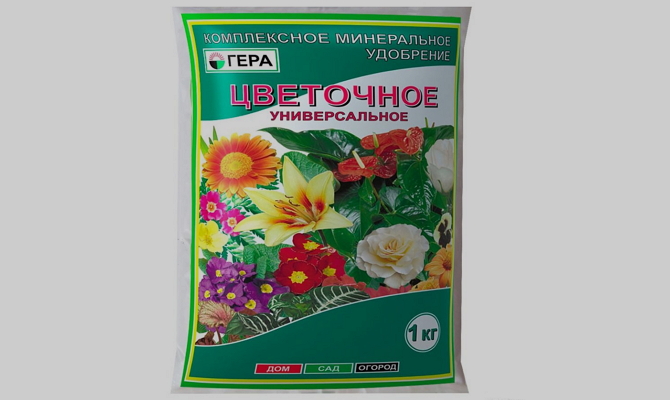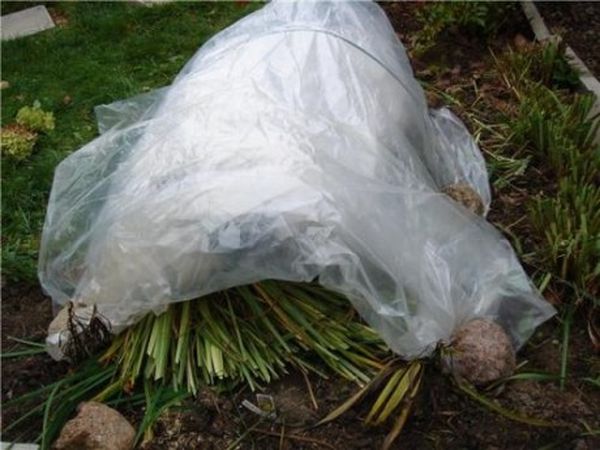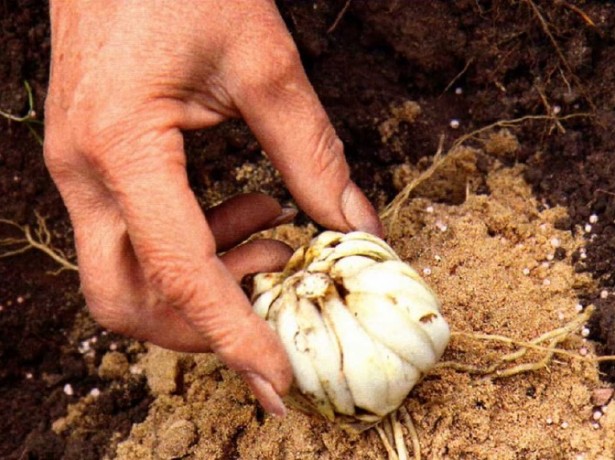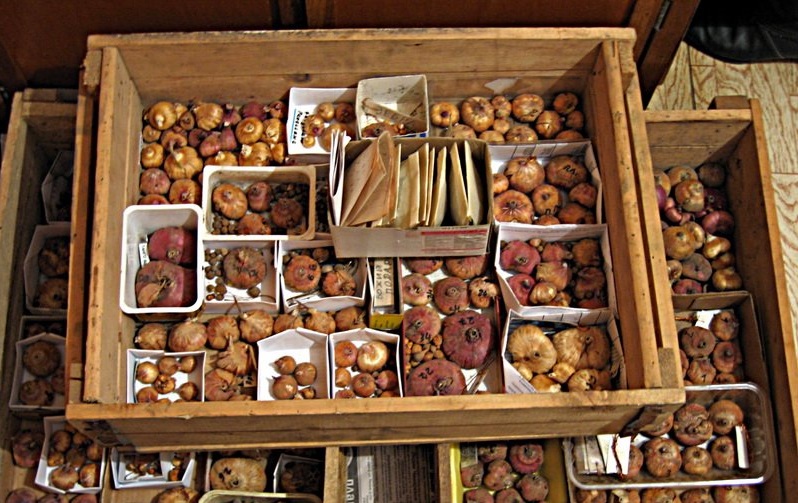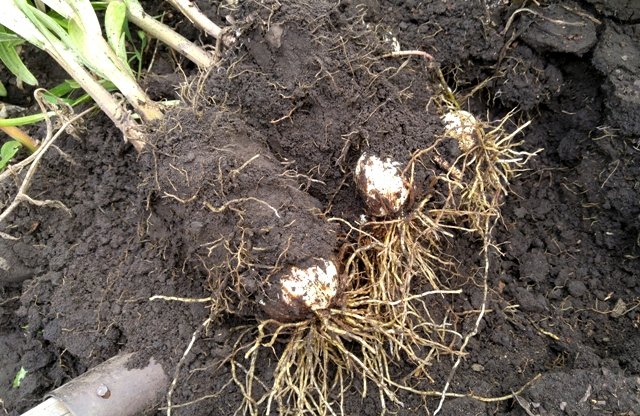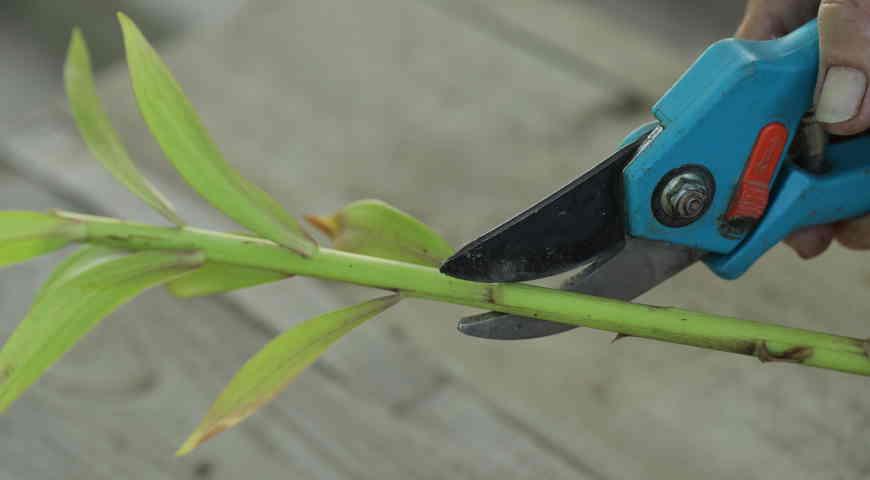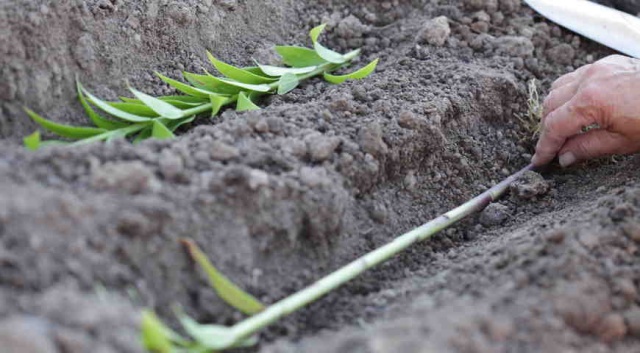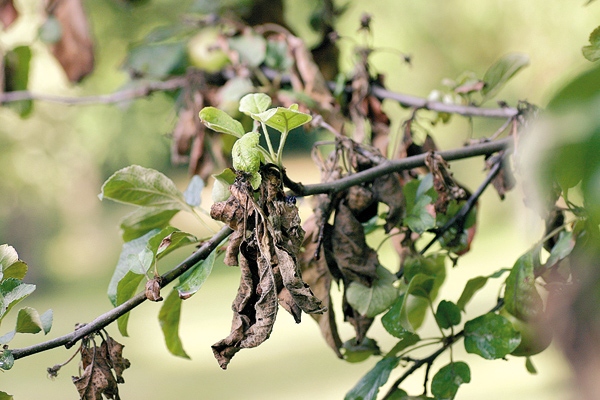Content:
Proper care of lilies after flowering creates the prerequisites for the development of a bush that blooms profusely with beautiful large inflorescences. To do this, you should observe agrotechnical standards and take into account the peculiarities of the flower. So, the lilies have faded - what to do next with them?
How and when to prune lilies after flowering
One of the important things to do with lilies after they have faded is pruning. If the stems with faded inflorescences are cut off early, immediately after flowering, the development and growth of the bulb stops due to the cessation of photosynthesis in the ground part. A weakened plant can hardly tolerate winter cold and by the new season one should not expect high decorative effect from it.
You need to cut the stem with sharp tools: a knife, a garden pruner, which must be disinfected. So that moisture does not accumulate on the cut and conditions are not created for the development of pathogens, the cut is made obliquely.
Flower beds with withered lilies look unattractive. To increase their decorative effect, the drying up inflorescences are closed by sowing rapidly developing annual flowers in front of the lily bushes: petunias, marigolds.
Top dressing and other agrotechnical measures
The lily is systematically fed throughout the growing season. The flower needs additional dressing after flowering, when the bulb is formed. In the second half of summer, after flowering, the plant needs fertilizers with a high content of potassium and phosphorus. You can fertilize during this period:
- potassium monophosphate at the rate of 25-30 g / m²;
- potassium sulfate (10-15 g / m²);
- superphosphate (20-25 g / m²);
- wood ash (100-150 g / m²);
- humus (bucket of 1 m²);
- special dressings for bulbous crops.
It is better to feed the plant with a liquid composition, which is prepared according to the instructions for fertilization. It is better absorbed.
The owners of garden plots, summer cottages are interested in what to do next in the open field when the lilies have faded. To maintain vitality, you need to take care of the plant:
- watering, avoiding dryness of the earth;
- loosen the topsoil,
- remove weeds.
It's time to transplant lilies in the garden
It is not necessary to dig up and replant a flower growing in the garden every year. This is done every few years (depending on the type of lily, the period between transplants can be 4-6 years, and a length of 10 years). When to replant lilies after flowering? This time comes 4-6 weeks after the end of flowering. Usually this is August - early September. By the time the flower is removed from the ground, all the stems of the plant should naturally wither.
The following stages of work on transplanting a flower growing on the street can be distinguished:
- a few days before transplanting, cut off withered stems;
- the plant is dug up, and the bulb is carefully freed from the clod of earth;
- the bulb is inspected and damaged areas, rotten or blackened scales are removed (a change in color indicates damage);
- children are separated from a large onion;
- all bulbs, children and mature, large, are dipped in a strong solution of potassium permanganate for disinfection for 20 minutes;
- the disinfected bulbs are dried in a shaded ventilated room for 2-3 hours;
- the processed bulbs are planted in a prepared place or placed in winter storage.
Protecting lilies in the open field from frost
Lilies planted wintering in the open field need to create a shelter that will protect from frost. A layer of snow more than 10 cm thick saves from the cold weather. It is not worth hoping that the snow will fall before frost. It is better to help the flower overwinter and prevent freezing by sprinkling needles or foliage, peat in the place of its growth.
An important condition for the effectiveness of a shelter is to create it in time and remove it in time. If it is too early to remove the spruce legs scattered around the flower garden, to collect peat and foliage from the ground, then only the sprouts of the plant that have hatched can be damaged by frost. If the material protecting from frost is not removed for a long time, the plant will receive insufficient sunlight, the sprouts will hatch weak and thin. A flower bush will grow weak too.
If lilies are houseplants
Many owners of houses, dachas, apartments, grow a flower indoors. They are interested in when the indoor lilies have faded - what to do with them next. The processes that the indoor lily undergoes are similar to the changes in the lily plants growing in their natural environment. Domestic flowers also turn yellow and dry out - first, their peduncles fall off, then the stems turn yellow and dry out. There is no need to touch the plant when it has just begun to fade. During this period, peace and the correct balance of moisture intake are important for him. Need to:
- reduce soil moisture by increasing the interval between watering to 6-8 days;
- stop spraying with water.
So it is possible to reduce the activity of processes in the ground part of the plant and to activate the processes taking place in the bulb.
When the ground part of the lily dries up naturally, watering stops altogether. The onion is dug out, cleaned from the earth and washed with water. Small onions are placed in seedling containers with moistened soil. Over the winter, they will gain strength, and in the spring they can be planted in a garden or in a container for indoor plants to grow at home.
Bulb processing
Large bulbs are carefully examined, damage is removed from them, and the place of cuts is treated with crushed activated or charcoal. The stem, which has not separated from the bulb, is cut off, leaving a part of it up to 6 cm long on the bulb.For disinfection, the bulbs are placed for 25-40 minutes in a solution of potassium permanganate or a fungicidal composition, dried on paper or cloth, and then placed in a cold place in a bag (refrigerator, unheated cellar) until late February - early March. In early spring, the bulbs stored in the cold are removed and planted in a container filled with fertile soil.
Storing the bulbs
Autumn is the time to plant bulbs in containers for winter storage. It is not necessary to plant mature large bulbs. During storage, they can be placed in a box and sprinkled with a mixture of sand, peat, sawdust. Or fold it into a plastic bag and sprinkle with the same mixture.Or make boxes and arrange them on top of them, and cover them with moss and burlap on top. Bulbs stored without soil must be dried.
Then the containers for the entire storage period are placed in an unheated cellar or on the lower shelf of the refrigerator.
Lily transplant
Lily can be transplanted in spring and autumn. Many growers prefer an autumn transplant - bulbs that are at rest at this time tolerate it well. In addition, in the fall, you can combine digging out the bulbs for storage and replanting. And the plants in the daylily can have different care requirements:
- varieties of Oriental and Orleans lilies requiring annual replanting;
- slowly growing varieties needing a transplant every 5-6 years;
- American hybrid varieties with a recommendation to replant every 10 years.
To make a summer cottage with a daylily look attractive, flowers must be transplanted correctly:
A week before transplanting, the shoots of the flower are cut off so that only a stump remains.
The plant is dug up, cleaned from the ground and examined. If there are damaged areas on the bulb (with dark spots, traces of rot), they are cut off.
The bulbs, wet after processing, are dried in a dark place at a temperature of 15-18 ° C, placing them on a wire rack on a tray.
Bulbs that have passed all stages can be planted or prepared for winter storage.
Reproduction by children
The most common and easiest way to propagate lilies is by root bulb propagation. In a lily dug out after flowering (approximately in August), daughter bulbs are separated from the root and planted in a box for growing seedlings or on ridges, deepening by 4-5 cm.If the flower planting site is a street, the ridge is covered with peat, autumn foliage, cover with a spruce tree.
From the root bulbs, adult bulbs are formed after 2-3 years, and the lily begins to bloom
Propagation by cuttings
Another easy way to propagate lilies after flowering is by cuttings. You can use a leaf with a stem piece or just a leaf, part of a stem with a dormant bud. To obtain cuttings, the stem is divided into parts with 5-7 leaves, the lower ones are removed, leaving 2-3 upper ones on the cutting. A leaf for grafting is taken at the top of the stem.
The prepared parts of the plant are treated with a solution of a growth stimulant, keeping in it for up to 12 hours. Then they are planted in prepared containers filled with a fertile substrate.
Leaves and cuttings to the middle of their length are deepened, slightly tilted, into the fertile black earth and covered with cellophane or covered with a glass jar. Water regularly, ventilate every day by lifting a film or a jar. Remove the moisture droplets from the covering material before returning it to its place.
After 1-2 months, the parts of the plant buried in the ground take root, and young leaves begin to grow from the formed bulbs. The cuttings that have gone into growth are planted in separate containers and grown until spring. In the spring, seedlings are planted in open ground.
Lilies obtained by stem cuttings can bloom already in the first or second year of planting.
Spring cuttings
You can propagate a flower by stem cuttings in spring with planting in open ground. The plant is dug up in the spring, the stems are separated and planted in a greenhouse.
For 1.5-2 months, small bulbs grow on the end of the stem buried in the ground.
The rules for caring for lilies are simple and straightforward. Their performance largely depends on how the daylily at home or an indoor flower will look. And every grower is interested in healthy, beautiful plants.

